The post Blurring The Lines In Telok Melano appeared first on The Expeditioner Travel Site.
]]>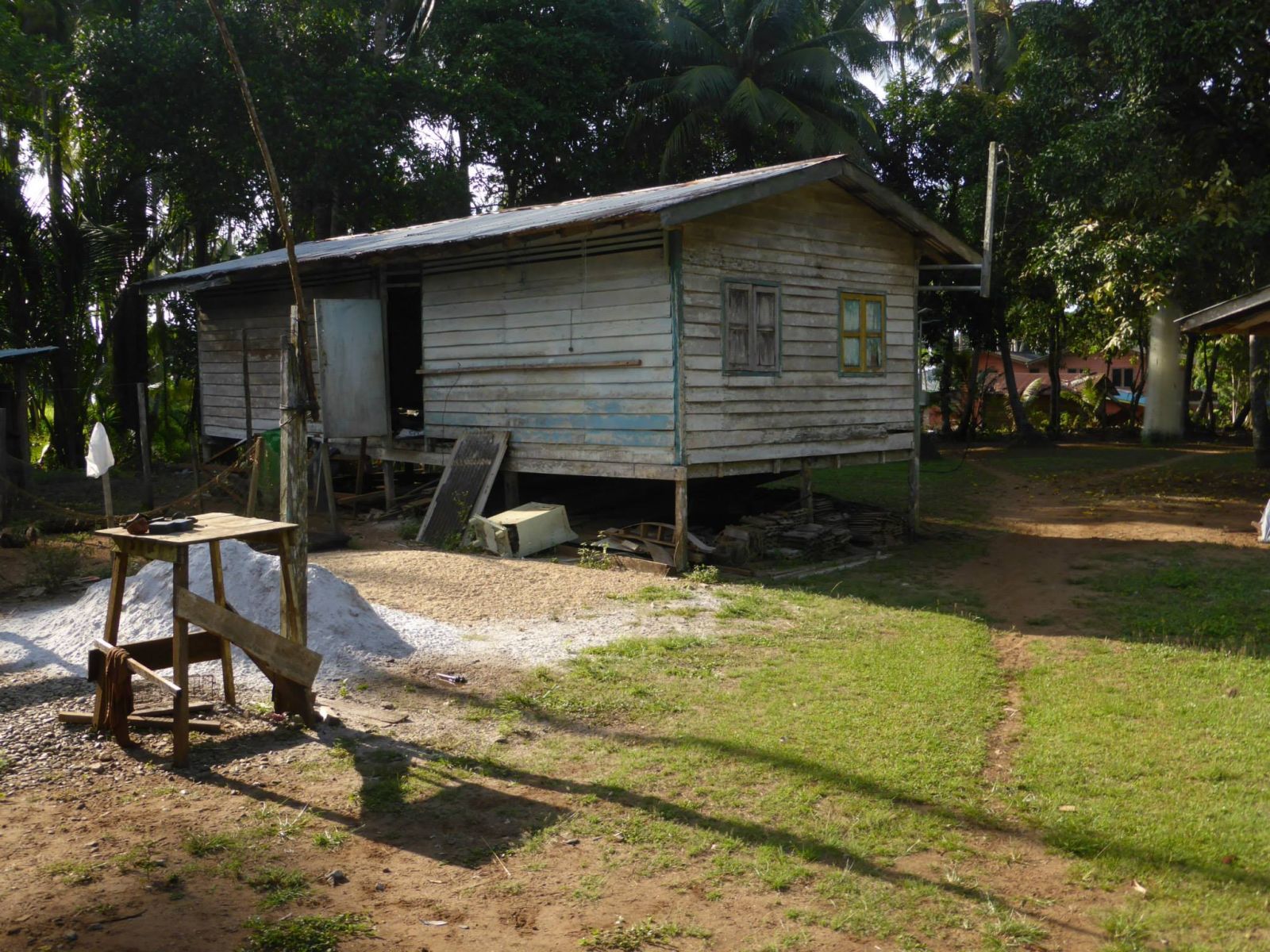
Akhim angles his flat double-engine skiff into the aquamarine traffic of waves pushing down out of the South China Sea. He gestures at Gabriela toward the distant slope of green peninsula ahead where black threads of smoke drill into the sky. “My village,” he says proudly, “Kampong Serabang, and more further is Mohammed’s village.”
Behind us the sleepy fishing town of Sematan is already a speck. After four hours waiting on the sun-baked quay and some gentle but persuasive haggling, we’ve managed to arrange an impromptu homestay with Mohammed at Telok Melano, the westernmost village on Malaysia’s side of Borneo and only reachable by a 40-minute boat ride. In the back seat, both Malay chiefs flash us brown, puckered smiles. The ambient temperature is a crucible of 95 degrees, even with the salt-stained air whipping past us.
By the time Akhim drops us off and we wade ashore, there are plenty of eyes on both pale-skinned foreigners. On the way to his home Mohammed shows off the newest addition to his community, a three story school where we can already hear the chatter and laughter of children. Dirt paths wend between stilted houses where young girls and wiry, naked-chested men stare out with a mixture of lethargic suspicion and shy, eager smiles. Chickens scatter at our presence or linger in the branches of stunted trees, safely out of the reach of gaunt dogs that play at our heels.
“We have about 250 people, maybe 55 houses, and we take water from the sea and make it clean. Also, solar power,” Mohammed explains when we reach his house, a modest Western-style double room attached to a more traditional stilted shack. In the kitchen his round, jovial wife prepares us watered-down lemonade. “She doesn’t speak English,” he laughs. Gabriela frowns at the joke.
The 50-year-old chief dons an immaculate Manchester United jersey and seems forgetful as he repeats facts and anecdotes. He’s uncomfortable with silences, and takes pride in reminding us that his children all went to excellent universities, two of them now working as English teachers in the country’s capital, Kuala Lumpur.
His tone is gravelly, half-way between pride that they’ve been able to raise from the subsistence life of plying the ocean for fish or harvesting black and white pepper from the local plantations and regret that they live so far away. The communal bonds here are what hold life together.
“It is always like this,” he says one morning, treating us to delicacies like steamed sea-snails, spicy laksa and stingray paté. Two other passing villagers stroll into the kitchen and join us, laughing and joking in vowel-rich Malay and passing around a clove cigarette. “Whoever wants to come, everyone is welcome, the door is always open. Big family.”
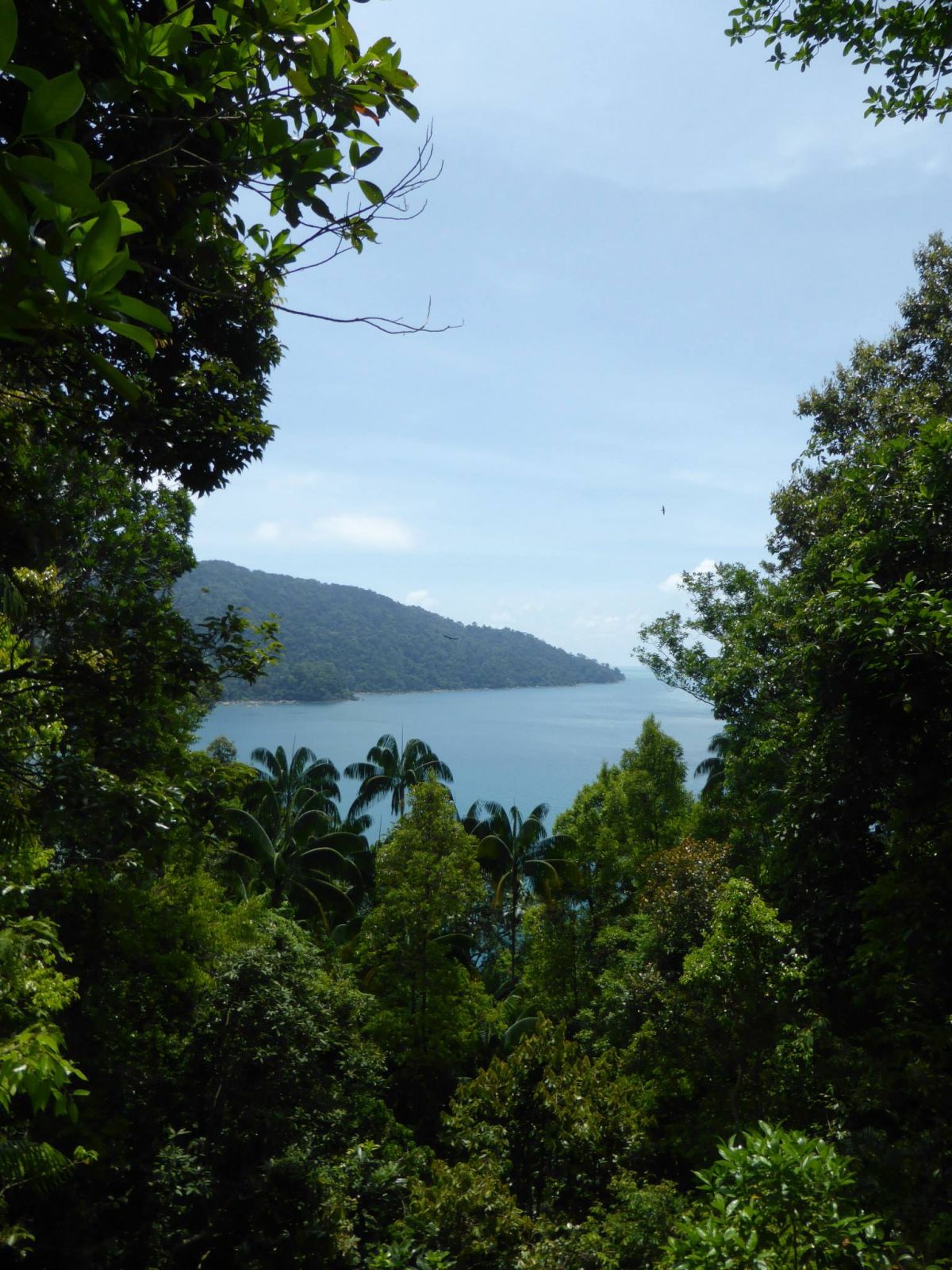
Afterwards Gabriela and I wander down the dusty path, sidled by smoldering clumps of garbage and coconut husks. We only met a few days ago in Bako National Park, a few hours north of Sarawak’s capital of Kuching, but the Tasmanian local is decisive, sharply curious and intelligent, and uniformly laid-back, three qualities that have made her an ideal traveling companion. I begin to doubt whether I would have gathered the motivation to make it this far without her.
A month ago she was in Japan, tackling the famous 88 Temple Pilgrimage, a route I’ve been looking forward to myself. Up ahead she pulls on a traditional cotton bonnet like the type Japanese women wear in rice fields and covers her shoulders with a blue shawl, ever-conscious of the sense of propriety that reigns in the predominantly Muslim country. She revels in the flamboyant color schemes of the houses: pastel yellows and greens, robin’s egg blue and hot pink. A young naked child waves at us despite her mother’s attempt to give her a bath.
Very few in Melano speak English, and we are regarded with the same passive kindness and neglect one might give a stray dog. Resources are meager, but ample enough for their means. Everything follows a slower pace. Time is an irreducible abstraction in the humidity. Because of the village’s proximity to the Indonesian border, many of the residents actually herald from Kalimantan or further south, but the similarity in language and culture is so slight as to be non-existent.
Because of Melano’s remoteness, the border crossing — a short 20-minute walk away — is highly informal and subscribes to the same laissez-faire sensibility. Goods can be bought for a fraction of the price in Indonesia, and when we return that evening Mohammed is helping boys unload surplus wooden furniture purchased overland. “Good price!” he says, emphasizing a business acumen worthy of a chief.
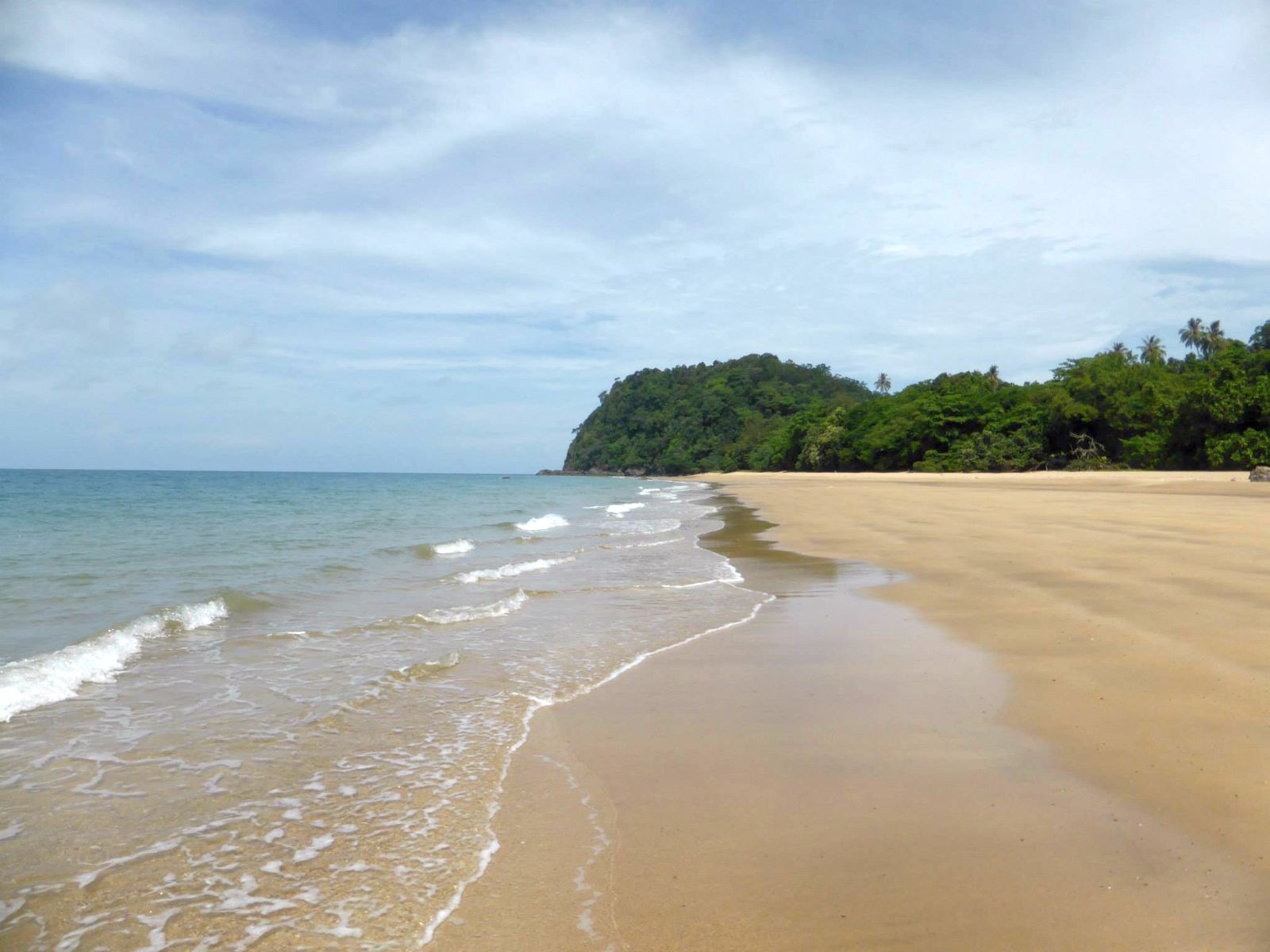
The third day Gabriela wants to visit Penang Park which follows the coastline north and is both the smallest, newest and northernmost of the national parks in Sarawak at only about 9 square miles (unlike Kalimantan, whose parks are fewer, but range from 3,400 to 5,300 square miles). The trail is used primarily by rangers and dips through low-lying mangrove, humid jungles and burbling creeks. We veer off near one of the junctions to a wide mile stretch of white sand. Blue-green water laps at the beach in somnolent intervals. These beaches are famous as sea turtle breeding grounds and under the shade of trees further up the shore we find deep craters gouged out by the patient effort of scaled flippers.
At the top of a steep lookout we have lunch and Gabriela remarks on the seemingly innocuous patriarchy that seems to preside over daily life back in the village. When he talks, Mohammed tends to address me in favor of Gabriela, and his wife is very much the domestic icon, waiting hand and foot on him and his guests. “Did you notice how she doesn’t even sit with us for meals? She sits on the floor to one side, and then she and her mother eat after us,” the Australian notes.
Gabriela’s poignant observation forces an unvoiced but stringent social hierarchy to the surface. The division between men and women is palpable, not just in terms of daily habits — women do not operate the flared-tail boats that bring in tilapia and other abundant catches, just as men do not participate in the affairs of the house such as cooking — but also in their interactions.
Boys cluster together on their dirt bikes. In the shadow of palm trees women weave baskets and giggle amongst themselves. Groups are defined by sex, and there seems to be little mingling between them in public.
Only children and young couples seem to have broken the trend, and even then, the insulated confines of the village seem to evoke a conformation. Nevertheless, Melano is not exempt from the effects of globalization and the encroachment of Western influences. Five hours every night, solar power hums into television sets playing badly dubbed James Bond movies, a weak Wi-Fi router offers limited access to the Internet and Mohammed’s son, visiting from Kuching, fiddles deliriously on his new iPhone.
It speaks to another kind of division in the unique Malay/Indonesian society, a paradoxical hope for the future, with the maintenance of traditional ways of life running tangent to a younger generation seeking out education and employment in bigger urban centers like Kuala Lumpur. Even with the new primary school, most children attend the bigger high schools in Sematan or Kuching. “If they can learn English, it means they have a better chance,” Mohammed says, but seems unconcerned. “This is home,” he shrugs, as if it simplifies for him and for us a latent contact and inter-connectivity to place and the people who inhabit it.
On the fourth day we bid goodbye to both him and his wife, taking his hand in both of ours and lightly tapping our foreheads to it, then quickly touching our heart in a traditional salutation. Akhim has returned and revs the engines. On the open seat in front of us two girls and their mother hide their faces from the sun under a veil, the youngest with furious dark eyes, inquisitive, and a smile more honest than I could ever manage. Gabriela takes their picture with a Polaroid and offers it to them.
A curious gesture, I wonder, and somehow seditious. Somehow wrong, in what it is attempting to assume — or impose. A first-worlder’s snap moral judgement, even if I agree with it. As if years from now the same girl might look back and remember the kindness of a stranger or the warning implicit in the offer of a photo. This is who you were. Something that blurs the lines between the expectations she will learn to live up to, and what Gabriela and I see — knowing we have no right to — as the brighter possibilities she might have strived for.
Behind us Akhim takes a call on his smartphone, shouting over the motors’ roar, and I smile. Might still strive for, I correct, and stare into the wind.

 Jordan Mounteer is based out of Nelson, British Columbia, and splits his time between writing and traveling. His most recent adventures took him to sacred lakes in the Peruvian Cordillera, dark back alleys in Ho Chi Minh, and pilgrim trails in Japan. He is currently finishing a published manuscript and preparing to hike the Pacific Crest Trail in the United States.
Jordan Mounteer is based out of Nelson, British Columbia, and splits his time between writing and traveling. His most recent adventures took him to sacred lakes in the Peruvian Cordillera, dark back alleys in Ho Chi Minh, and pilgrim trails in Japan. He is currently finishing a published manuscript and preparing to hike the Pacific Crest Trail in the United States.
The post Blurring The Lines In Telok Melano appeared first on The Expeditioner Travel Site.
]]>The post Video Travel Guide To Malaysia appeared first on The Expeditioner Travel Site.
]]>In this travel video travel guide to Malaysia, I travel to Malaysia’s capital city, Kuala Lumpur, and to Terengganu, the country’s second-largest city.
I start off my trip by exploring Kenyir Lake, located just west of Terengganu, which is actually the largest man-made lake in Southeast Asia (it’s the size of Singapore). I head to the far end of the lake by speedboat to go trekking into the hilly jungle where I come across a school of hungry fish waiting for eager tourists like myself to provide them with a cheap snack. I then head back on the lake to explore the many islands that call this lake home.
Next, I head back onto the water — this time to the ocean — to do a little squid jigging as part of the first annual Terengganu International Squid Jigging Fest. Squid jigging, for those of you that don’t know, is the act of fishing for squid by hand with a line and hook, something I have questionable skill doing.
Back on dry land, I explore the market in Terengganu, one of the best places to find fresh seafood in the entire country, and try some of the region’s favorite desserts and iced coffee.
For the second half of the video, I head east to the capital city of Malaysia, Kuala Lumpur, where I — what else? — find some street food in the famous Chow Kit neighborhood, followed by a little more food in Kampung Baru, a sleeping Malay enclave flanked by the city’s downtown tower.
I then take the monorail (!) to explore the Petronas Towers and the KL Tower, two of the city’s most famous landmarks, followed by dinner in Jalan Alor, the city’s famed outdoor street food district.
Finally, it’s time for a little rest and relaxation back on the west coast of Malaysia at the island of Redang, one of the country’s most beautiful tropical islands, where I get to experience what beach life is like in Malaysia.

/
 Matt Stabile is the Founder and Editor-in-Chief of The Expeditioner. The Expeditioner began in 2008 and is headquartered in New York City. You can read his writings, watch his travel videos or contact him at any time at TheExpeditioner.com.
Matt Stabile is the Founder and Editor-in-Chief of The Expeditioner. The Expeditioner began in 2008 and is headquartered in New York City. You can read his writings, watch his travel videos or contact him at any time at TheExpeditioner.com.
The post Video Travel Guide To Malaysia appeared first on The Expeditioner Travel Site.
]]>The post 6 Clubs To Rock To In East Asia appeared first on The Expeditioner Travel Site.
]]>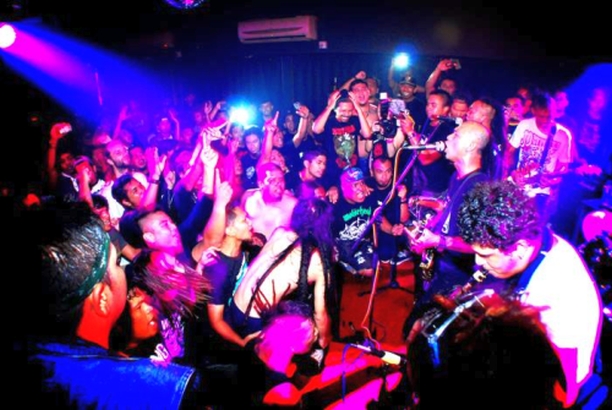
Okay, you can be honest with me. Spit it out. You did not come halfway across the world for this, how they call it, “Banana Pancake Trail”? I know exactly how you feel. I can tell how much you would like to throw a chair at that guy who’s mesmerizing a full table of other exemplars of the backpacking species with his bragging rights, just over there. His tales of having seen this and that tourist attraction on the ultra-cheap contradict with the reality that his clothes would pay for two months’ worth of food for a local family.
You feel like you would be better suited outside, grasping for a change of air, like an amphibian in dire need of a habitat change. At least, back home you would know where to go bang your head, turn your anti-social behavior into loud drunkenness, and raise the horns to the Devil’s music.
But how can you do it in Asia-town? My friend, today is your lucky day because I’ve been there, and done that, and I am going to give you six places to find the rock underbelly in some of East Asia’s sprawling cities. If you thought they didn’t rock, well, you should get back into that hostel lounge, sit next to the bragging guy, and start clapping your hands.
1) Soundmaker, Penang, Malaysia
Literally hidden at the second floor of a tattered building along Pengkalan Weld, about half a mile down the road from the Jetty, this is the place to rock in Northern Malaysia. Check their show listings before you go because this place is not a bar, therefore, it is not open when you want. Rather, this is a real do-it-yourself underground venue,where heavy metal, punk, death metal and alternative rock spray the walls with sweat.
The showroom is decently sized and the sound system is quite good for an underground enterprise. The fact is that in Malaysia — a country who forced a ban on metal music in 2001, and whose Islamic party has given a hard time to Elton John because he is openly gay — you cannot really get much better than this. Soundmaker is the place to rock away your sleepy weekend afternoons and early nights, as no show can go on after 12 a.m. As a tip, buy some beer at the Chinese food court downstairs, as there is no bar inside.

2) Yuyong Yishan, Beijing, China
Beijing had an amazing alternative rock and punk club called D-22 in the Wudakou student district where the Chinese bands of the ’90s made the history of Beijing punk. Unfortunately, it closed last year. D-22 an institution for Chinese underground rock, and has been the backdrop of many of my more interesting Chinese nights. Now, the megalopolis’s new focus of rocker attention is Yuyon Yishan.
As a reflection of the cosmopolitan and never-sleeping Beijing art scene, the club offers a mix of proposals coming from the realms of rock, electronic music and much more to keep your feet moving and your head banging. And in case your recent activities included Great Wall hiking, be warned, this may not be the best place to rest your aching legs.
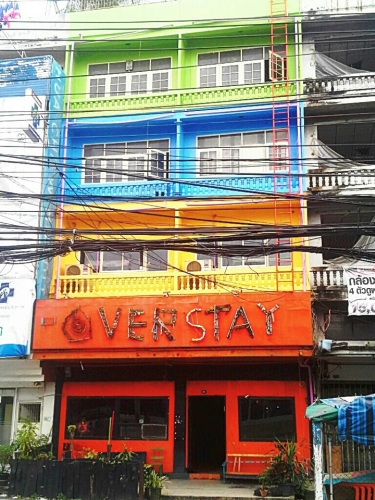
3) The Overstay, Bangkok, Thailand
With Bangkok’s reputation for vice and all sorts of other mischievous evils, it comes quite as a surprise that its music scene is so dead. Luckily enough, not too far from Khao San Road tourist enclave, you can find a pretty particular example of postmodern subculture in Pinklao: the Overstay.
This 6-story building functions as a rock/alternative venue, and a very cheap hotel with artsy character and an alleged ghost haunting the upper floors to spice things up. Come to enjoy live bands from all sides of the rock/alternative/electronic spectrum, and bring along your instrument for the occasional jam sessions. And if you’re hungry, you can try out the open kitchen to cook up some vegetarian food for your new friends.
4) Rumah Api, Kuala Lumpur, Malaysia
In a place called the “fire house,” you may expect amplifiers to burst out sparks of white heat and set your eardrums on fire. If you know what a real punk house is, and I mean an independent space where DIY is the law, welcome to Rumah Api, one of the places in Kuala Lumpur that dares to object to the city’s rampant, over-constructed technologic wealth and high-class loving youth.
A stone’s throw away from the Ampang LRT station in the northeastern part of the city, Rumah Api is to Kuala Lumpur what CBGB was to New York during its heady punk days. Catch a dose of local and international punk, hardcore, crust, thrash and grindcore bands sweating — literally, as the only wall fan provided resembles a World War II airplane’s engine — on the nonexistent stage, and mingle with the most alternative youth in the capital. This place has plenty of character, but you gotta have some to enjoy it too. Otherwise, please keep on reading your book at the guesthouse or do not sway too far from Petaling street, I have warned you.
5) Sharky Bar, Phnom Penh, Cambodia
The self-described “longest running Rock ‘n Roll bar in Indochina,” Sharky’s Bar has been entertaining Phnom Penh for the past 17 years. Which, let me tell you, is a great accomplishment in terms of having given a space for rock music to a country that had seen many of its best musicians exterminated by the Khmer Rouge’s genocidal fury.
Situated not too far from the riverside at Road 130 in the Kahn Daun Penh district, Sharky is a cosy, American-style bar with pool tables and plenty of beers on tap. Come for the fun “beer pong” every second Tuesday, and expect to find local and international bands playing their brands of bluesy, rocking or rolling fury on stage.
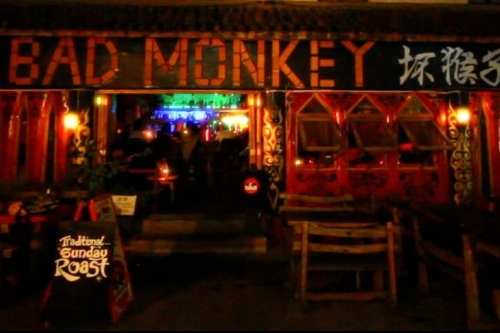
6) Bad Monkey Bar, Dali, Yunnan, China
Dali keeps transforming since I first visited, and Bad Monkey Bar is one of the better improvements to the city that I’ve seen. This club brews its own beers and sits in the main center of the Old Town, a perfect location to break your journeys to and from the mountain side and the lake. The setting of Dali itself is awe-inducing, and a night out here is a great way to top your stay with some doses of unhealthy international and Chinese rock, punk and more.
By Marco Ferrarese

ABOUT THE AUTHOR
 Marco Ferrarese has visited 50 countries and lived in Italy, the United States, China, Australia and Malaysia. He started vagabonding as a punk rock guitarist in Europe and North America, hitting the most famous and infamous stages across the two continents. In late 2007 he relocated to East Asia. He is currently a PhD candidate at Monash University, Kuala Lumpur, researching the anthropology of punk rock and heavy metal in Pacific Southeast Asia. He posts a weekly column at Rolf Pott’s Vagablogging and writes about hardcore Asian travel and extreme music in Asia at MonkeyRockWorld.com.
Marco Ferrarese has visited 50 countries and lived in Italy, the United States, China, Australia and Malaysia. He started vagabonding as a punk rock guitarist in Europe and North America, hitting the most famous and infamous stages across the two continents. In late 2007 he relocated to East Asia. He is currently a PhD candidate at Monash University, Kuala Lumpur, researching the anthropology of punk rock and heavy metal in Pacific Southeast Asia. He posts a weekly column at Rolf Pott’s Vagablogging and writes about hardcore Asian travel and extreme music in Asia at MonkeyRockWorld.com.
The post 6 Clubs To Rock To In East Asia appeared first on The Expeditioner Travel Site.
]]>The post 7 Tips For Travel In Southeast Asia appeared first on The Expeditioner Travel Site.
]]>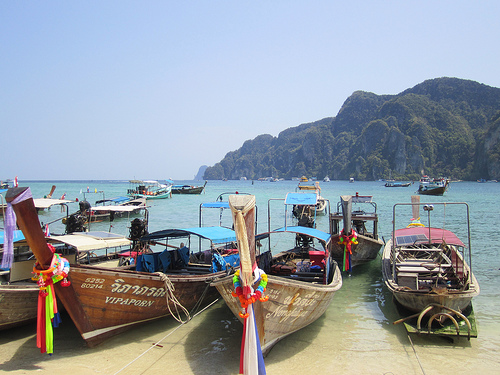
Southeast Asia is probably the best place in the world for your first extended backpacking trip. The food is delicious, the locals friendly, the beaches extraordinary, the accommodations well-established and the sites varied and unforgettable. You’re likely to return home with plenty of fond memories and incredible photos of Southeast Asia. If you’re considering setting off for Thailand, Malaysia, Laos, Cambodia, Vietnam, or any other country in the region, keep these tips in mind.
1) Stay Longer in Fewer Places
One of the biggest mistakes I saw was travelers rushing through an itinerary with too many places in too little time. No matter how long your trip is, it’s advantageous to go fewer places, while spending more time in each place. I would also encourage you to take more time than you think you need or want. Chances are you’ll wish you had more time.
On my recent trip to Southeast Asia, I saw one young backpacker who had begun to resent the region. He had been pushing too quickly to “see” whatever it was that he thought he had to see, ran into some unexpected difficulties and got extremely frustrated. Take it more slowly and you’ll have a better trip.
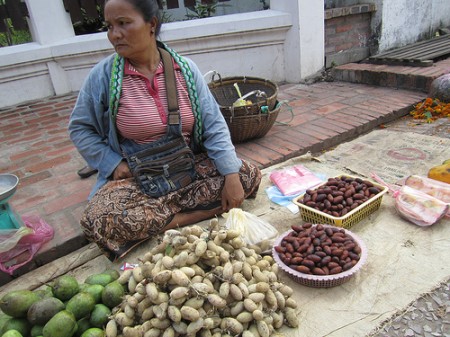 2) Don’t Plan Too Much
2) Don’t Plan Too Much
Leave room for spontaneity. That’s part of what makes traveling fun. You might want to plan a basic outline of the major places you want to visit. But give yourself plenty of time to absorb the atmosphere of the cities and villages and leave time in case you meet people and decide to do an impulsive side trip.
There’s no need to make reservations anywhere in Southeast Asia. You can just show up and shop around for your accommodation. I traveled for three months and never made one. I had a roof (and an inexpensive one I’ll add) over my head each night.
3) Travel With a Different Guidebook
Everybody has a Lonely Planet guidebook. Don’t buy one. Get a Rough Guide, Moon or Footprint. Lonely Planet channels everyone into the same guesthouses and hostels and that drives prices up. Plus, these guesthouses fill up more quickly. A good tactic is to check out a few guesthouses located around the ones listed in your guidebook. They are usually of the same standard and sometimes cheaper. I also always look at more than one place . Bargain friendly, and take the one that suits you best.
I generally choose my guidebook by the one that has been updated most recently. And remember, if at times of weakness, you are missing your LP, chances are the backpacker on the bus in the seat next to you has one.
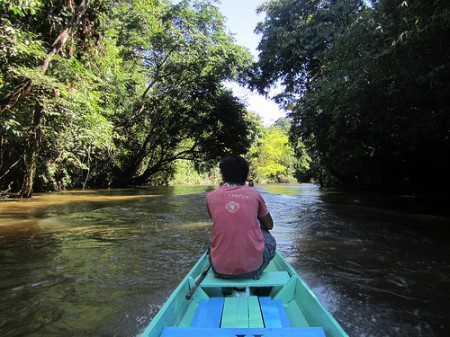 4) Avoid Multi-Day Packages and Backpacker-Only Buses
4) Avoid Multi-Day Packages and Backpacker-Only Buses
These are designed to make traveling easier. Organizers facilitate border crossings, transportation connections, accommodation and sometimes visas. In my opinion, this takes the fun and challenge out of independent travel. Figuring out transportation logistics is half the battle of traveling. Our detailed guidebooks make it easy enough, anyway. The multi-day packages also keep backpackers together and discourage interaction locals.
Another reason to avoid these packages, as well as international buses and VIP buses, is that you become an easier target for scams. In general Thais are pretty honest people, except when it comes to the individuals running the foreigner-only long distance buses from Khaosan Road to the rest of Thailand. I’ve heard some nasty stories of long delays, stranded travelers and multiple accounts of theft. Best to keep to the normal buses that leave from the bus stations.
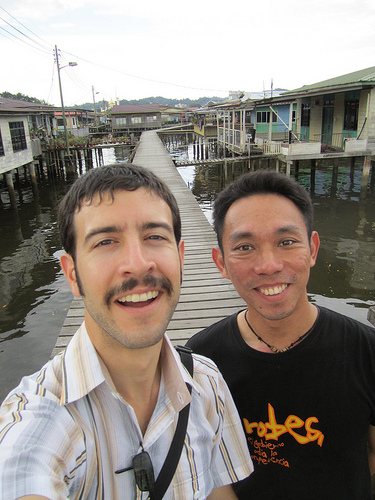 5) Travel With a friend; Travel Alone
5) Travel With a friend; Travel Alone
If you are traveling alone, great, you will meet plenty of people, both local and fellow travelers. If you are traveling with a friend, you will get lots of quality time with that person. Try to structure time away from your travel companion for a couple of reasons.
First, it will give you the independence to experience traveling on your own: meeting new people, making your own mistakes and choosing your own adventures. Secondly, it will improve and strengthen your relationship with your friend/partner when you return to each other. I used this scenario during two different trips with a good friend and it worked well. I also noticed that I have different and richer travel experiences when I’m alone.
6) Pack Light
This is one of my universal travel truth tips. It is always a good idea to pack as light as possible. Remember, you’re carrying everything on your back. Carrying less will obviously be lighter and increase your mobility, but it will also make getting in and out of transport, and to and from your accommodation easier. There’s really no need to take more than three or four changes of clothes.
If you’ll be working from the road or are a serious photographer, you might have a decent amount of equipment (extra lenses, external storage devices and laptops). But, most of us can just hit the road with a medium-sized backpack and small personal bag for valuables. I generally put nothing of value in my backpack. Although crime and theft in Southeast Asia is very unusual, I still want peace of mind when I throw my bag under or on top of the bus. And if your backpack is small enough, you may be able to carry it on with you, including during your flight, which could also save you money.
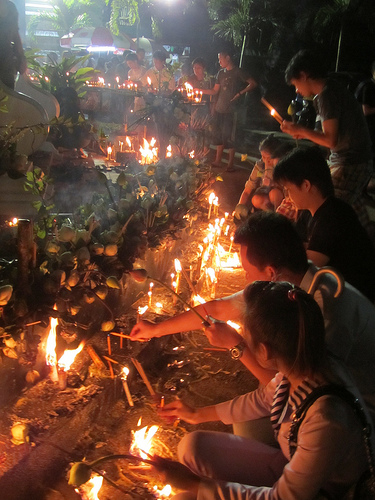 7) Avoid Burnout
7) Avoid Burnout
If you’re going to be traveling for more than two months, you’re going to need to recharge your batteries. Everybody does this in his or her own way. It could be alone with a book, a film, spending a day inside a nicer hotel room, eating comfort food, playing football — whatever.
Know yourself and know what you need to get a fresh perspective of where you are and what you’re doing. I’ve seen travelers get really frustrated and begin to develop animosity towards the country that they’re in at the time.
Author Paul Theroux, in his latest book, suggests bringing reading material unrelated to the country in which you’re traveling. At the end of a culturally intense day in Cambodia, you probably don’t want to wind down by reading a book that takes place in Southeast Asia. Rather, take one that will provide some relief through means of escape.
[All images via the author]

About the Author
 Stephen Bugno has been traveling the world for more than a decade as both a volunteer and a wanderer, and is the editor and publisher of the online travel magazine GoMadNomad.com and his personal site BohemainTraveler.com. You can follow Stephen via twitter at @bohemiantrav or on Facebook.
Stephen Bugno has been traveling the world for more than a decade as both a volunteer and a wanderer, and is the editor and publisher of the online travel magazine GoMadNomad.com and his personal site BohemainTraveler.com. You can follow Stephen via twitter at @bohemiantrav or on Facebook.
The post 7 Tips For Travel In Southeast Asia appeared first on The Expeditioner Travel Site.
]]>The post An Unforgettable Tour Through Southeast Asia [Photo Essay] appeared first on The Expeditioner Travel Site.
]]>From the 1000-year-old temples, to the food, to the other backpackers one encounters on such a trek, what follows, I hope, is a gentle kick-in-the-behind motivation for those thinking of traveling there.
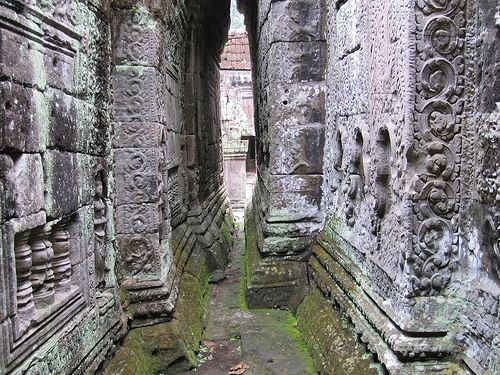
The walls at Preah Khan, probably the most famous temple in Angkor, Cambodia.
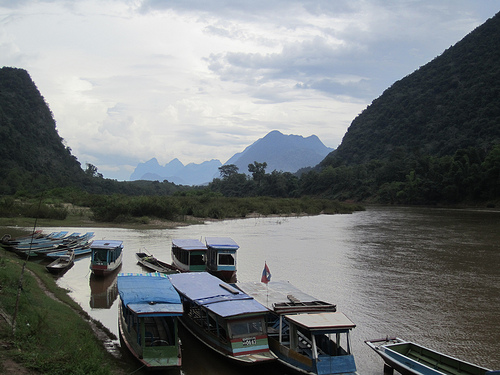
Looking downstream in Muang Ngoi, a Lao town along the Nam Ou River.
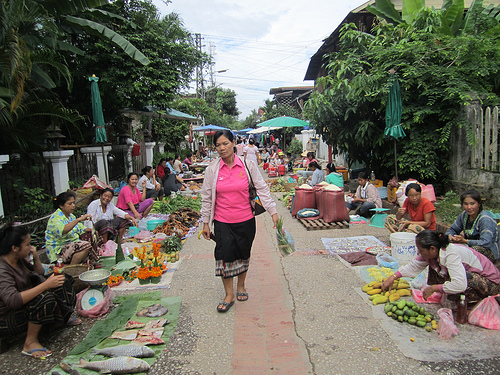
An early-morning stroll in Luang Prabang’s morning market, north central Laos.

Dinner during a two-day trek to an Akha hill tribes village near Phongsali, the northernmost province in Laos.
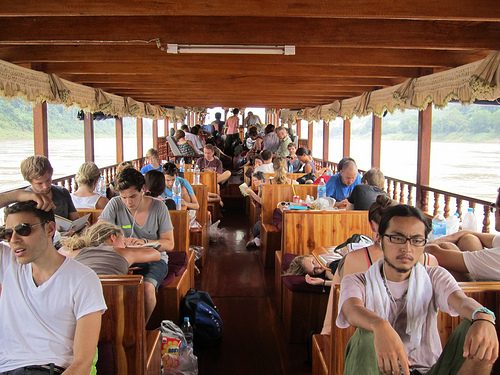
Taking the slow boat ride down the Mekong River in Laos from Houayxai to Pakbeng.
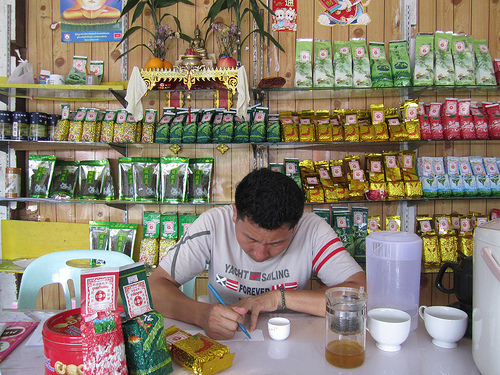
This tea salesman, in the Chinese village in northern Thailand called Mae Salong. is writing out the brewing instructions I asked for.
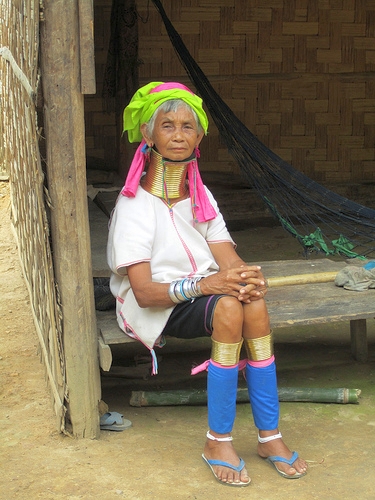
An older woman from Mae Hong Son, in northern Thailand near the border of Burma.
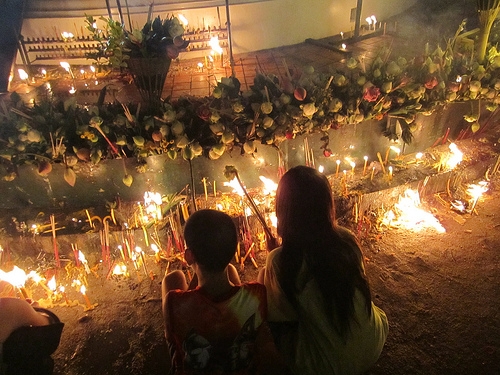
Visakha Bucha Day in Chiang Mai. The holiday celebrates the birth, enlightenment and entry into nirvana of the Buddha.
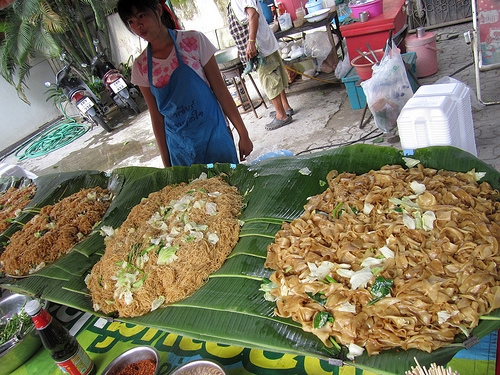
A vendor prepares for the crowds at the night market in Chiang Mai.
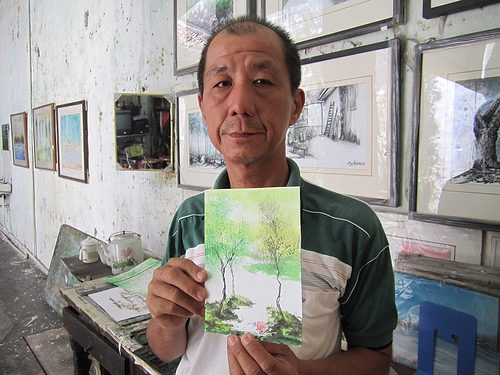
Stanley Ho, my favorite artist in Melaka. He’s holding the painting I bought from him. Visit Stanley at 46 Jalan Tun Tan Cheng Lock in the old part of town. He loves to chat.
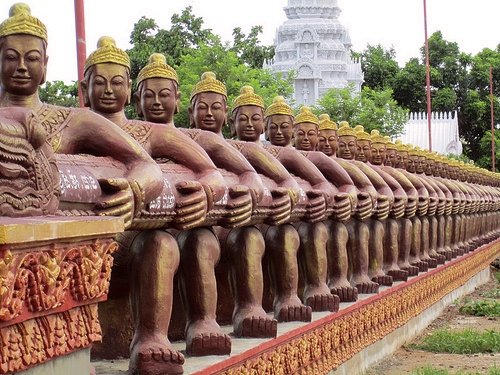
Near Kampong Cham in central Cambodia is the 11th-century religious compound, Wat Nokor.

Sunset in Kota Kinabalu, Sabah, Malaysia.

About the Author
 Stephen Bugno has been traveling the world for more than a decade as both a volunteer and a wanderer, and is the editor and publisher of the online travel magazine GoMadNomad.com and his personal site BohemainTraveler.com. You can follow Stephen via twitter at @bohemiantrav or on Facebook.
Stephen Bugno has been traveling the world for more than a decade as both a volunteer and a wanderer, and is the editor and publisher of the online travel magazine GoMadNomad.com and his personal site BohemainTraveler.com. You can follow Stephen via twitter at @bohemiantrav or on Facebook.
The post An Unforgettable Tour Through Southeast Asia [Photo Essay] appeared first on The Expeditioner Travel Site.
]]>The post A Tour Of The Best Malaysian Dishes appeared first on The Expeditioner Travel Site.
]]>
Given the fact that Malaysia is made up of mainly Malays, Chinese and Indians — three of some of the best food cultures in the world — it’s not surprising that a trip to the country will likely turn out to be one long, unforgettable gastro-fest. To test out this theory a summer expat, Karen Pinchin, recently partook in a summer feeding frenzy and submitted this story to Gadling, consisting of her memories of eating her way through the country.
This included everything from eating fish curry mixed with bread for breakfast, heading to lunch in an open-air food market in Taman Tun for some char kway teow — a pad thai-like dish with caramelized noodles — and asam laksa, a “a spicy fish gravy soup with chewy shrimp cake, round udon noodles and hunks of tart pineapple, with a dusting of cilantro, peanuts and dried anchovies,” and even having a dinner feast with an actual princess. For this meal they ate “stuffed, grilled fish, at least five of them, alongside metal plates filled with curries, vegetables, and a strangely scented green pod called petai (or, as we found out later, ‘stinky beans’) that was mixed with the chef’s own belachan. This latter concoction was a blend of chillies and dried shrimp paste that, even today, makes my heart beat faster.”
I just ate a burrito from Chipotle and then read this article and got sad. I think I need to get to Malaysia.
[photo by malaysianyc/flickr]
The post A Tour Of The Best Malaysian Dishes appeared first on The Expeditioner Travel Site.
]]>The post Forget Pandora: A Trek Into Earth’s Oldest Rainforest appeared first on The Expeditioner Travel Site.
]]>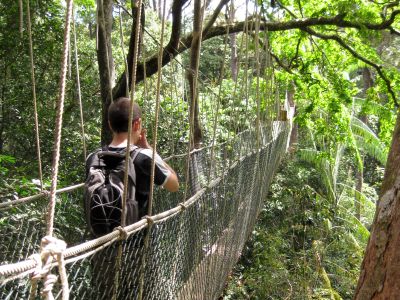
Button-faced gibbons lankily toss themselves through the canopy, a petite mouse deer gnaws at a bush below, and Betek — the chief and shaman of his tribe — methodically whittles another blow dart to such slender precision it nearly becomes invisible to the eye. He sheathes the final product into a vacant hole in the honeycombed interior of his bamboo case and draws another dart from his thick, curly black hair to smooth it out with a leaf coarse as crocodile hide.
Like most men from his tribe, his survival solely depends on his weapon — the instrument with which he shall obtain food for his family. He props himself proudly upright with the 1.5-meter bamboo blowpipe held at his side, standing proudly like a giddy child fond of his new walking stick. The hunt this afternoon will be pleasant, for the section of the jungle he has chosen to roam today is shaded with several densely layered canopies creating a green, leafy ceiling upwards of five stories above his head. This rainforest has been part of the Orang Asli, or original people, for an unrecorded amount of time, and because time is not a concept Betek is frank with, his age, as well as all the members of his family and surrounding tribes, is unknown, lost in the perpetual heat of the 140-million-year-old rainforest here in central Malaysia they call home.
A world Away
Taman Negara, which means National Park in Malay, is thought to be the world’s oldest rainforest, and is a veritable time capsule of ferns, fauna, and a way of life that has stood still in content without the knowledge of the end of another year. Back on the hurried streets of Kuala Lumpur, Malaysia’s robust financial hub, Saudi tourists order shisah next to Chinese visitors counting down the days until the celebration of the year of the tiger. The two places might as well be solar systems away with all they share in common, for if either of these people were to switch places the experience would prove to be overwhelming, if not completely alien.
Realizing Our Roots
But Taman Negara is not a forlorn planet on some stellar wing. The park is directly in the middle of peninsular Malaysia, roughly four hours north of Kuala Lumpur. Malaysia’s capital is an auspicious menagerie of Malaysian, Indian, and Chinese culture that booms with the pulse of a clock ticking a tick too fast. The smell of curry tickles my nostrils as I walk along Bintang Walk in Kuala Lumpur’s massive shopping district. A nearby mega mall, aptly named Times Square, looms over the street where bargains get better every cascading tier of escalator you climb.
I’ve just left the air-conditioned theater from a screening of “Avatar.” The story of man’s inexorable tendencies to disregard the value of Mother Earth seeks refuge in my mind as I re-enter the streets of the city under the concrete awning of the skyscraper. As the main character in the movie, Jack Sully, begins to appreciate the roots of a life alien to himself, can we truly feel no empathy?
Settling Next To A Kuala
Bertek and his grandson, who could easily be mistaken for his son, toss fishing nets into the current of the wide river. To the unknowing eye the empty water bottle buoys look like garbage floating in the river. The plastic bottles, whittling knives, and second-hand clothes (replacing the leaves they once wore) are all products of the outside world, which they have adopted since they have recently begun to come into regular contact with foreigners.
Those seeking to experience the elements with them are more than welcome to stay a night with Betek, where he and his family will act as your guides. Betek’s people, the Orang Asli, are nomadic by nature, moving only for better food sources or if there is a death in the family; always settling next to a river. The river has always been a key element to making settlements, and in Malaysia this is an attribute very much understood. In Bahasa Malaysia (the official language of Malaysia and a tongue also shared by the Orang Asli), the word for a junction between two rivers is kuala, a common title found in city names across Malaysia. (The capital city, Kuala Lumpur, actually means muddy river, a name given during the settlement of the city.)
Protected Lowland Rainforest
A narrow boat needles its way for two hours against the current from Kuala Tembeling to Kuala Tahan, where a small group of family-run hotels and hostels are nestled on the southern tip of this giant jungle. Visitors will only see a portion of this protected lowland rainforest, assuring its preservation while keeping people out of contact with the more territorial members of the park. It’s rare to see larger animals, though their discordant calls can be heard reverberating through canopies in the midst of a jungle ballad.
Screeching Cicadas
When the ambiguous sounds of the day give way for nocturnal creatures to spring to life, guides will assist you on a night safari down a well-boarded path with flashlights. Most of the wildlife you’ll see on this trip will be small insects taking the forms of stick bugs, scorpions, and the irritating cicada. From the moment the sun sets, these bulbous bugs the size of two thumbs pressed together wail with a racketing pomp that sounds like a fire alarm giving up to drained batteries.
“The cicada only lives two weeks,” our guide tells us as we make our way through the dense overgrowth. “There is not much time, so he always sounds very happy.”
If you get lucky, your guide is likely to shimmer his flashlights on the red eyes of a gibbon, samba deer, or mouse deer, the latter being a petite, pointy-nosed cross between a deer and, of course, a mouse.
Sniping At Monkeys
Betek is quite fond of most of these animals — mostly for their nutritional value. He explains to us over his boiling porcupine soup that spears are wielded when hunting small land mammals, while blowpipes are used to stealthily snipe at birds or monkeys lounging on treetops. Visitors are encouraged to take a shot of a blowpipe at a target in the village, though the weapon is most accurate when shot vertically.
Betek unsheathes a fresh dart and places it in the pipe, then dislodges a piece of green hand-made cotton stowed behind his ear to add as a pressure stopper – giving an audience to his crack-shot skill. During the midday hunt he managed to wound a small monkey on the arm. The darts used by the Orang Asli are laced with poison from the sap of a tree that is lethal to small animals. The wound to the arm can be considered a prize shot because after the monkey becomes faint from the poison and falls from the treetops, he will have to amputate the infected part of the body.
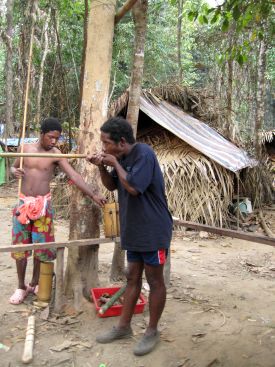 Men Hunt, Women Build
Men Hunt, Women Build
“Men are good for hunting. Women are good for making homes,” Betek explains while a small bug crawls up his cheek — bringing no concern to either party. The seven thatched huts and leafy lean-tos that make up this camp have been built by the women of the village. The lean-tos are used by women with newborns so their lives may be brought into the public eye, allowing the tribe to unite around the needs of a new member. Planks of wood with donated blankets make up a large extent of the interior. The dirt floor has a hole dug in the corner where meals are labored over day in and day out. None of them have ever sat in a movie theater before. The only sounds they are given for entertainment are the chirping cadences of the forest and each other’s company.
Animists
The Orang Asli, like many indigenous cultures in Southeast Asia, are animists — a spiritual belief sown out of the sanctity of paying homage to the elements of the jungle (e.g., trees, water, sky, ground). Food shortages and the release of a human spirit into the soil are deemed bad omens, foreboding enough to abandon camp, usually with the shell of their former lives in tact, to find solace through the course of another transient trek. As chief and shaman, Betek has the responsibility of attending to all medical and spiritual needs of his family. The Malaysian government has donated modern medicine to tribes of the Orang Asli, but the people still stand by methods of the forest, cultivating miscellaneous ferns and saps along the forest floor.
World’s Longest Canopy Bridge
Standing 40 meters from the ground below on the longest canopy bridge in the world, I look across the lowland landscape of jungle kicking about in the wind like a vast ocean floor of green anemones. The towering trees along the canopy walk are spectacularly tall — appearing to make dents in the sky. The bridge is about 460 to 500 meters long, and took me the better part of 15 minutes to walk across, occasionally stopping to totter on the wobbly foot-width of board for a snapshot.
The roots of plants slip out of every layer of the dense jungle making a web of life with no distinguishable beginning or end. The Orang Asli have taken up roots below these giants in harmony for a time no clock can count. A night out in the jungle of Taman Negara, exposed to the elements of the Earth (not to mention leeches during the wet season), seems an adventure too foreign for most, but Betek’s crooked-toothed grin goodbye tells a different tale. An ineffable sense of pride captures him and his people. Having the opportunity to share their way of life with those curious enough to take notice is a reward they are all too willing to savor and repeat for those yet to come. The gap between our worlds may be vast, but it is clear to see that the rainforest has endowed the untainted spirit of these simple people a human nature akin to the planet which both of us call home.

Justin Calderon been living in and out of Asia since 2006 teaching, writing and enjoying as much adventure as the gentle attrition of time can allow.
After two semesters abroad in Australia and Thailand with Marist College, this New Yorker furthered his love affair with the Eastern Hemisphere by moving to South Korea. When the Korean Peninsula got to be too cold for him, he jumped over to Taiwan where he taught English and learned Chinese for two years.
Justin currently lives in Shanghai where he is a print copywriter for Global Sources, a leading trade magazine that specializes in Chinese exports. So far, he has traveled to 13 countries and regions in the Far East alone, and plans to continue his insatiable wanderlust while jotting it all down.
To track what Justin has been up to recently go to justincalderon.wordpress.com.
The post Forget Pandora: A Trek Into Earth’s Oldest Rainforest appeared first on The Expeditioner Travel Site.
]]>The post So This Is The Malaysia You Want To See appeared first on The Expeditioner Travel Site.
]]>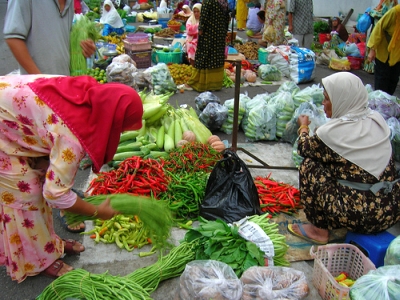
Malaysia, as a whole, is made up of thirteen states and three federal territories, with Kuala Lumpur and the more visited locations lying in the west. But, on the eastern coast of Malaysia lies Terengganu, a state where ethnic Malays make up a majority of the population, and travelers are a distinct minority, most choosing to stay in the more well-known western states. Too bad, as the NZ Herald notes, they’re missing out on a lot. Islands, unique food, and wildlife abound here, and that’s just scratching the surface.
The state of Terengganu has an enviable share of the eastern coastline, augmented by half a dozen islands lined with coral reefs and white sandy beaches. Here, you can explore crystal waters and endless coral gardens in which you might find yourself snorkelling alongside turtles and baby sharks.
And you can bet that with all that isolation, plenty of authentic culture will abound.
Local traditions remain strong here. Kite-flying, batik-weaving and even traditional boat-building can all be found where the Terengganu river meets the sea. A road stretches the length of the coast, lined with stalls selling keropok lekor (the chewy, deep-fried fish sausage which is an eastern specialty) and punctuated by jetties offering ferries to the islands.
A cruise around the state’s “Fun Map” (yes, that’s what they named it), shows the existence of both a turtle and a firefly sanctuary (separate — luckily) in the south, as well as a pheasant park further up. Okay, this is kind of a fun game. If you could only do one, which one would it be? Which one could you lie about seeing and still probably get away with once you got home? I’m thinking you’d see the fireflies, lie about seeing the turtles (you just tell everyone, “Yeah, they were slow and green”), and then you save the pheasants for the next trip. Or you do all three, as I know you I-have-4-week-vacation-Europeans will probably just end up doing. So jealous.
The post So This Is The Malaysia You Want To See appeared first on The Expeditioner Travel Site.
]]>The post Lonely Planet’s Top 10 Countries For 2010: And The Winner Is . . . appeared first on The Expeditioner Travel Site.
]]>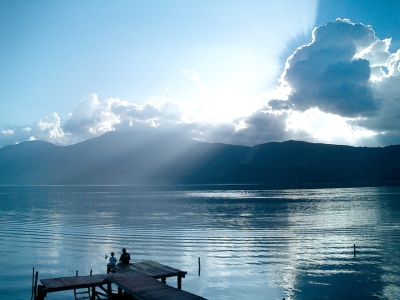
Lonely Planet’s doling out accolades to these ten countries as being very topping, with El Salvador being the toppingist of them all. Okay, they don’t really elaborate as to what this list mean, other than being the “hottest countries for next year,” but I assume they mean destinations that are, or have been, under the radar and are just coming into their own as hot spots for travelers. Which usually means one thing: Get there now before they’re firmly on the tourist trail.
Rounding out the top five are Germany, Greece, Malaysia and Morocco. And at number 10, experiencing a little Obama bounce, the U.S.A., which given the likelihood of a an anemic dollar for the near-term future, will likely be at the top of the list for many visitors, especially those carrying the enviably strong euro.
So what’s missing here? I may sound like a broken record, but let’s give a shout out to Colombia, a country whose culture and diversity, not to mention accessibility, makes it a great “top” country in 2010. A few of my own honorable mentions: Panama (have you seen how cheap it is to fly there in the winter?), Ireland (see Panama), and Namibia (everyone I met in Africa who was visited the country raved about the outdoor adventures that can be had there).
The post Lonely Planet’s Top 10 Countries For 2010: And The Winner Is . . . appeared first on The Expeditioner Travel Site.
]]>